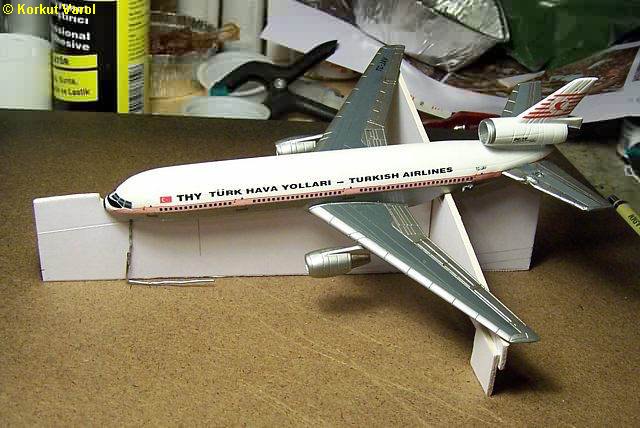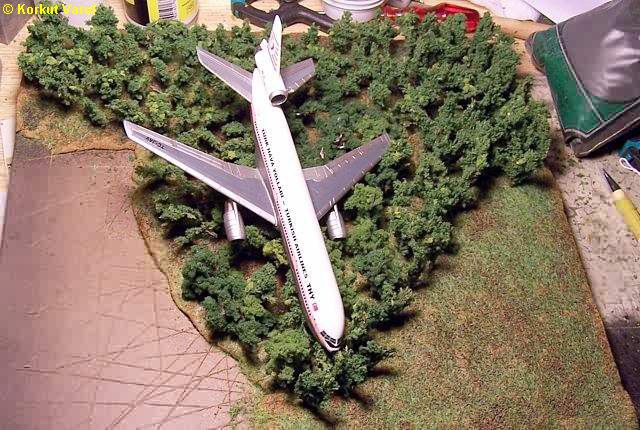
This
is how the base will roughly look
like.

December 08,
2007:
I began exercising
with the trees. I cut some thuja branch ends from our garden, let dry
on
the radiators for 4 days. I cut the ends to scale lengths for the
trees,
and after applying hair spray on, I dipped the tree in a mixture of
Faller's
light and medium green scattering media, so that they stuck on the
branches.

Here
is a close-up photo of the trees.

Next
step was to determine the 3-D
position of the plane. From the accident reports, it is known that the
plane was leaning with 17 degrees to its port side, with a nose pitch
of
4 degrees. So I made a template that the plane would rest on, with the
required angles. The inclination of the ground was
compensated for,
while cutting the sheets.

I
added two more wires by heat-sinking.
Now the plane had the correct 3-D position in the air, and the wires
would
be hidden by the trees.

I
chose to work with window glass putty
as the soil. I began at the center, where the plane would rest.

I
covered the putty with shades of
grass, soil, stone, etc. and started with hiding the 3 supporting wires
with trees.

Then
I continued to work from the center
to outer regions. I paid attention to chopped-off trees where the left
wing passed.

I
also paid attention to the trees
below the fuselage and the right wing, which did not touch any trees
but
the air motion swept the trees.

December 09,
2007:
I continued with
partial covering of the base and tree manufacturing.

 ........................
........................ ......................
......................












